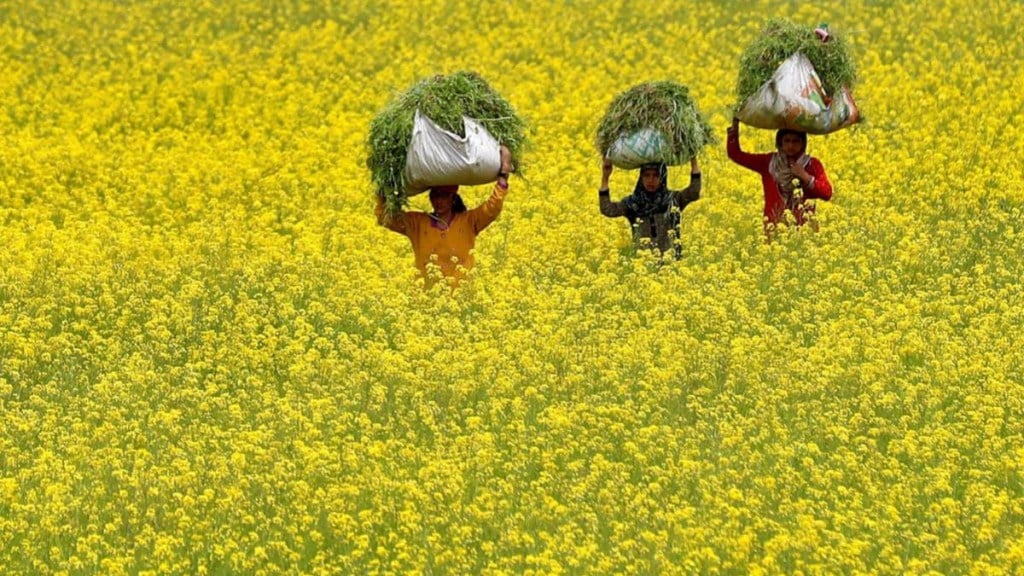The interim Budget has stated that a strategy to achieve self-sufficiency in oilseeds such as mustard, groundnut, sesame, soyabean and sunflower will be formulated under its ‘Atmanirbhar Bharat Abhiyan’ initiative. Sandip Das enumerates the challenges in achieving this goal amidst softening of global prices and low import duties:
| Targeting self-sufficiency in oilseeds
In her Budget announcement, finance minister Nirmala Sitharaman said the proposed initiative would ensure the availability of high-yielding seed varieties, better market linkages, procurement, value addition, crop insurance and adoption of modern farming techniques in mustard, groundnut, sesame, soyabean and sunflower cultivation. Currently the existing yield gap in oilseeds is about 60% and reducing the productivity gap through varietal development to 20% in the next five years can lead to additional production of 13-14 million tonne (MT) oilseeds or 3-4 MT of edible oils. This can be achieved without bringing any additional area under oilseeds cultivation.
In order to reduce dependence on imports, in 2021 the Centre had launched the National Mission on Edible Oils – Oil Palm with a budget of Rs 11,040 crore to promote cultivation in the north eastern states. It aims to double oil palm acreage to 1 million hectares by FY26.
l Current challenges in boosting production
A recent paper by Nabard and ICRIER had said India will continue to import large quantities of oilseeds till 2030-31 because of a substantial demand-supply gap. It said a technological breakthrough in oilseeds to increase productivity or area expansion are the only two possible solutions. The report cautioned that achieving self-sufficiency in traditional oilseeds such as mustard, groundnut and soyabean would require bringing an additional area of 39 million hectares under cultivation, which could cut area under cereals thus endangering food security. It, therefore, recommended ramping up efforts to increase productivity (yield per harvested acre) of oil palm comparable to that of global leaders such as Indonesia and Malaysia.
The Commission for Agricultural Costs and Prices (CACP) has also suggested special efforts to increase production of major oilseeds such as rapeseed, mustard, sunflower, etc., and tap potential of non-conventional oils such as rice bran oil and corn oil to boost output.
l Demand-supply gap
Although domestic oilseeds — mustard, groundnut, soybean —production has gone up by 26% to 41.3 MT in the 2022-23 crop year (July-June) from 32.7 MT in 2013-14, India relies heavily on imports to meet demand. The CACP in its price policy for rabi crops for the marketing season (2024-25) said imports meet 60% of the country’s annual total requirement of 24-25 MT. Share of palm oil in the import basket is around 60% while soybean and sunflower oils have a share of around 20% each. In terms of share in domestic output, mustard oil tops at 40%, followed by soyabean at 24% and groundnut at 7%.
During the 1980s and 1990s, per capita annual consumption of edible oils was 6-7 kg with the country largely self-sufficient in edible oils. The per capita annual consumption of edible oils has now risen to around 19 kg. However, the Indian Council for Medical Research recommends edible oil consumption of 12kg per person per year. With growing income, changing consumption patterns and fall in international prices of multiple varieties of edible oils, the demand for mustard oil has also gone down.
l Surge in imports of edible oils
The finance minister’s statement comes at a time when low import duty has led India to become a major destination for imported edible oils. This has affected price realisation of oilseeds farmers. India’s import of edible oils — palm, soyabean and sunflower — rose 17% year on year to a record 16.47 MT valued at Rs 1.38 trillion in the 2022-23 oil year (November-October). Most of the imports are from Malaysia, Indonesia, Russia and Ukraine.
In order to curb a spike in prices at the retail level, the government has reduced import duties till the end of FY25. Currently, crude palm, soyabean and sunflower oil imports attract only a 5% agri infra cess and a 10% education cess, resulting in a total tax incidence of 5.5%. Last year, the government had reduced the import duty on refined soyabean and sunflower oils to 12.5% from 17.5%. The Solvent Extractors Association of India has repeatedly warned that with continuance of lower duty structure, India will be a dumping ground for cheap edible oils which would hurt the farmers as well as the oil processors.

